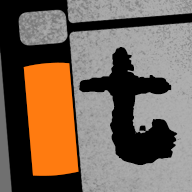Hey Jax-Rox, I defer to your experience and wisdom. I do think you are focusing on what would seem to me a small portion of the cinema camera market. From out here, it seems like one huge budget project will use more cameras than any 20 independent self equipped guns for hire. There are what 10 or 20 huge projects in production at all times, that's a lot of cameras.
Certainly - with two to three units running A, B and sometimes, C, D and more camera units, that's a lot of cameras!
But, unless you're talking about some weird amalgamation of high-budget indies (is there such a thing?

), most of the cameras are rented - either from a rental house, or (on, perhaps, a lower budget) from the DP themselves who owns the camera.
Even on productions like The Hobbit - they may have had 50 RED Epics for a whole year, but they would have essentially been on a 'long term rental' from RED - at the end of it, the Producer doesn't take all the cameras home - they go back to RED.
Similarly, the production doesn't hire camera techs, it hires ACs - like any other production. If there's a problem with the camera the camera that's not simple, or is from the camera itself it gets sent back to RED to be fixed.
The margins on the cost of camera production is what makes the manufacture money.
What is the margin, sale price less the cost of production, of a $40K cinema camera vs a $3000 one?
Does it cost $40K to produce a varicam? Maybe 60% margin on high end class leader products. The margins on consumer products are normally measure in the single digits! The only way to make money in consumer products is volume. Volume production is a larger investment in tooling and factories to drive the cost of production down so margins can be sustainable. You can have a smaller factory, hand tooling and slow custom assembly of a $40K camera, making a large margin, but you MUST have a large automated factory for MASS produced product like a consumer DSLR camera, other wise the margins are lost.
Cool, let's say a 60% margin on a $40k camera. So Panasonic would make, say, $24,000 per camera sold. They may make $50 per DSLR sold. I fail to see how this supports making cameras cheaper? Why
not make a camera that costs the same amount as a DSLR to be made, but you're now making $4,000 (say a 40% margin on a $10k camera - yes I'm making numbers up but you get my point) instead of $50. With one camera sale, you make the same amonut of money as you would with 80 of the cheaper ones.
Pany has already invested in the expensive manufacturing capacity to deliver mass volume of consumer dslrs, the dslr market is fast disappearing, there is limited time to recoup investment before the market dries up and the technology moves on.
Assuming Panasonic spend as much money and time on R&D as everyone else, then they wouldn't be making a DSLR if there was no market for it, or the market was 'drying up'.
Nobody is saying YET that a $3k blackmagic or $10k red is "better" than an alexa (or what ever the hightest end prod cameras are these days) but eventually they will say something very much like it... Arri will have to advance the products or lower the prices for what they have, or people will move away from their products. But brand loyalty on the high end of things is something to consider...
Most of this is completely contrary to what you've stated earlier (i.e. the camera cost is but one small part of the entire production budget).
Also, you're assuming that if prices were to drop, that the highest priced camera wouldn't also drop it's price, or similarly that if image quality were to get better on the lower priced cameras, that the higher priced cameras wouldn't also get better quality images. You also may be suggesting that people will decide that cheaper cameras are better simply because they're cheaper - that's really not the case at all as for most people price is only one factor - as you said yourself earlier.
Sure, on a lower budget indie, rental on a RED is a big part of the budget, and you're happy with that because it's great.
On a large, or even medium budget Hollywood film, you're working with experienced DPs who craft the look of your film, which includes the camera choice.
On a large scale, the difference in rental price of a RED kit and an Alexa kit is pretty damn small, insignificant when it comes to decent budgets. So DPs can shoot what they think is best, and as long as Alexa delivers the images DPs like and an easy workflow it will still have a large portion of the market.
A lot of REDs popularity can be attributed to:
It can go places Alexas can't
It can be rigged easier than an Alexa
It can be stripped down to be much lighter than even a stripped Alexa
It delivers great quality in a small, lightweight form factor for 3D (especially handheld and steadicam rigs)
And it delivers 4k-6k resolution, which is great for VFX.
Of course, on anything without a huge budget, it's used
because it's cheaper.
At the end of the day, price isn't the only factor affecting camera choice - I've shot on RED when I feel the story warranted a more 'crisp, clinical' look to it.
All of the current available cameras, including film, have different looks - and it comes down to what the story warrants.
But this is not really what we were initially discussing








